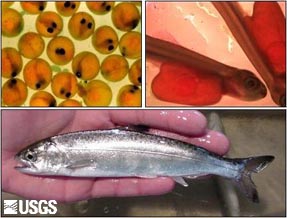- Home
- About S&T
- Taxa/Organisms
- Ecosystems
- Issues
- Methods & Tools
- Reports & Publications
- Location
- Search
2008 | Publisher: Other (RSC Publishing, Journal of Environmental Monitoring) | Format: URL
www.rsc.org — Environmental contaminant and biomarker monitoring data from major U.S. river basins were summarized for black bass (Micropterus spp.) and common carp (Cyprinus carpio) sampled over a nine year period. Cumulative frequency distributions revealed taxon differences for many organochlorine residue concentrations, elemental contaminant concentrations, More...

2008 | Publisher: USGS | Format: URL
pubs.usgs.gov — This study determined that concentrations of persistent hydrophobic contaminants, such as polycyclic aromatic hydrocarbons (< picograms per liter), legacy pesticides (<10 picograms per liter), and polychlorinated biphenyls (<280 picograms per liter) were low and indicative of a largely agricultural area. Atrazine and simazine were the most More...

May 4 2007 | Publisher: Other (Springer New York) | Format: URL
www.springerlink.com — This project is an evaluation of three potentially nonlethal alternatives to fillet sampling for the determination of mercury (Hg) concentrations in smallmouth bass (Micropterus dolomieu) to monitor mercury concentrations in smallmouth bass (micropterus dolomieu) from six sites in southern Missouri were captured by electrofishing. Blood samples More...

2005 | Publisher: USGS | Science Center: Florida Integrated Science Center (FISC, Gainesville) | Format: URL
fisc.er.usgs.gov — This guide contains an identification key to the eleven foreign nonindigenous cyprinids, as well as species accounts that include physical characteristics, reproduction, ecology, and distribution in its native habitat and in the United States. Biologists, resource managers and others interested in nonindigenous fishes will find it a useful tool More...
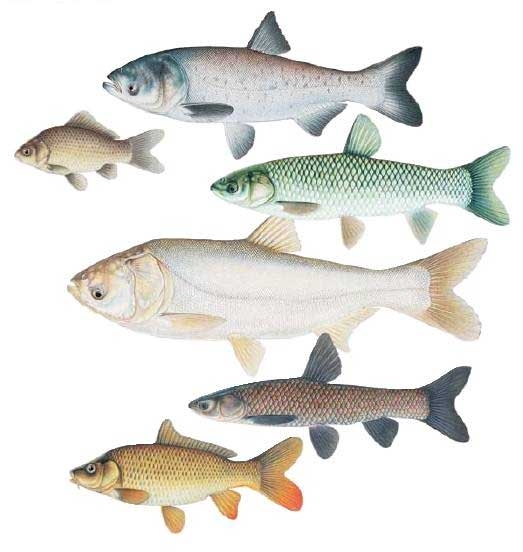
May 2004 | Publisher: Other Federal Agency (Bonneville Power Administration) | Format: URL
pisces.bpa.gov — The U.S. Department of Energy's Benneville Power Administration proposes to address two fundamental aspects of lamprey biology by describing diagnostic characters of egg and larval stages of Pacific, river, and western brook lampreys, preparing a meristic and morphometric identification key, and developing molecular techniques suitable for More...

2002 | Publisher: USGS | Science Center: Western Fisheries Research Center (WFRC, Seattle) | Format: URL
wfrc.usgs.gov — The value of this long-term monitoring program will provide data crucial for understanding demographic and reproductive characteristics of these endangered sucker populations. This research will have wide applicability to federal, state, and tribal agencies in the basin for management and recovery efforts.
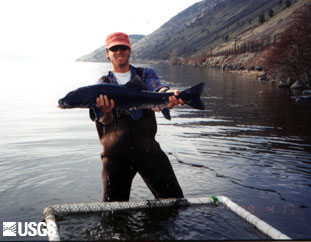
2002 | Publisher: USGS | Science Center: Great Lakes Science Center (GLSC, Ann Arbor) | Format: .PDF
www.glsc.usgs.gov — In 2002, scientists from the Great Lakes Science Center assessed the health of the populations of preyfish for the biennial State of the Lakes Ecosystem Conference (SOLEC) to provide information to policy makers on the status of the lakes and future needs. Preyfish population is one of the 80 indicators used by SOLEC to determine the health of the More...

June 2001 | Publisher: USGS | Science Center: Upper Midwest Environmental Sciences Center (UMESC, LaCrosse) | Format: URL
www.umesc.usgs.gov — This report describes an electronic database containing 474 annotated citations that are relevant to fish passage through dams in large temperate floodplain rivers. The goal of this project was to survey the literature to help define the potential ecological consequences of restricted fish passage through dams in the Upper Mississippi River System More...

September 10 2000 | Publisher: Other (Grand Canyon Monitoring and Research Center) | Format: .PDF
www.gcmrc.gov — Lees Ferry was stocked with Rainbow Trout in the early 1960`s. Since then, it has been a nationally acclaimed and world renowned blue ribbon fishery. With its value as a recreational play land for fishermen and safe haven for wildlife, the function and impact of the Glen Canyon Dam has become increasingly important for study and monitoring.

Publisher: USGS | Science Center: Western Fisheries Research Center (WFRC, Seattle) | Format: URL
wfrc.usgs.gov — Anadromous salmonids are susceptible to a variety of pathogenic microorganisms, including at least 30 bacteria and viruses. Whereas the impact of these microorganisms on salmonids in wild and natural rearing areas is difficult to measure, losses from disease among hatchery salmonids are both common and well documented. The immunology laboratory More...
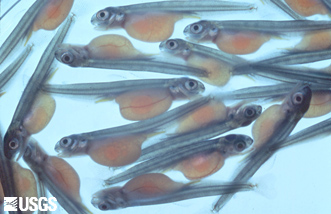
Publisher: USGS | Science Center: Western Fisheries Research Center (WFRC, Seattle) | Format: URL
wfrc.usgs.gov — This project addresses the occurrence of metal and organochlorine contaminant residues in commercial feeds purchased by the U.S. Fish and Wildlife Service (FWS) hatcheries. Research into fish feed quality could benefit all hatchery and aquaculture operations and assist in the interpretation of the effects of pollution on wild fish. Results from More...
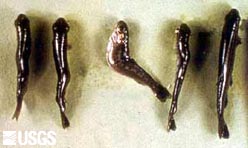
Publisher: USGS | Science Center: Western Fisheries Research Center (WFRC, Seattle) | Format: URL
wfrc.usgs.gov — Salmonid species in the Pacific Northwest continue to decline despite management efforts to mitigate the effects of development of the Columbia River basin and power system. Altered fish species diversity and changes in the aquatic habitat have created the need for research to determine the status, life history, and habitat requirements of at risk More...
